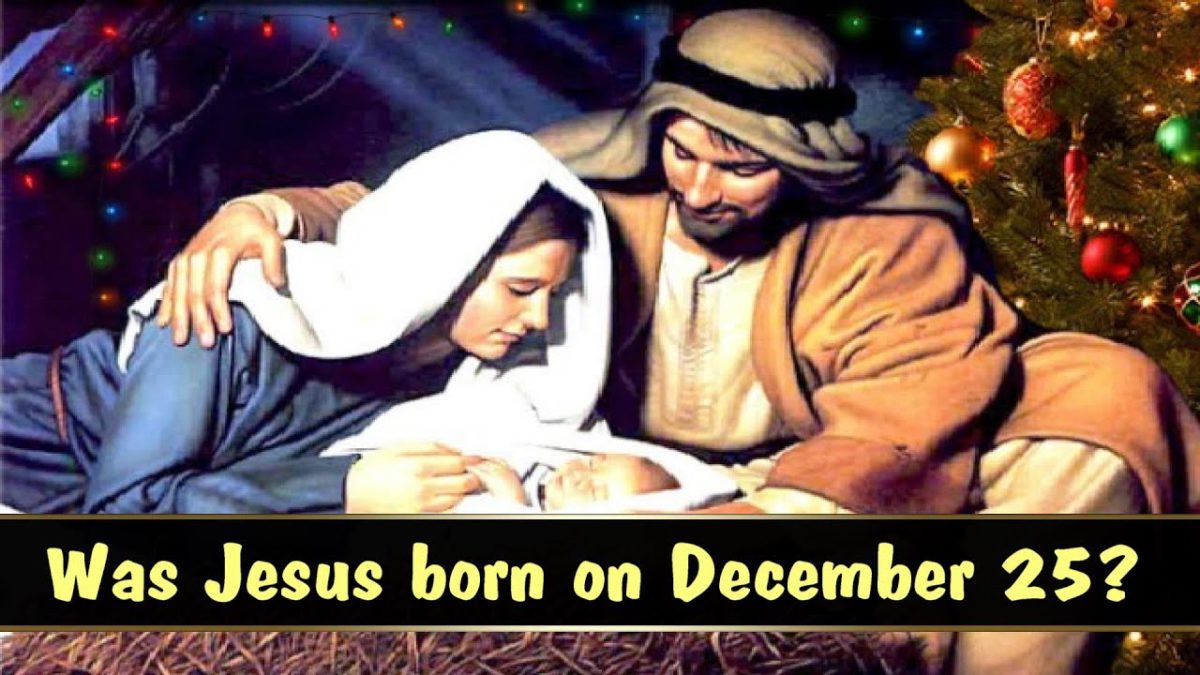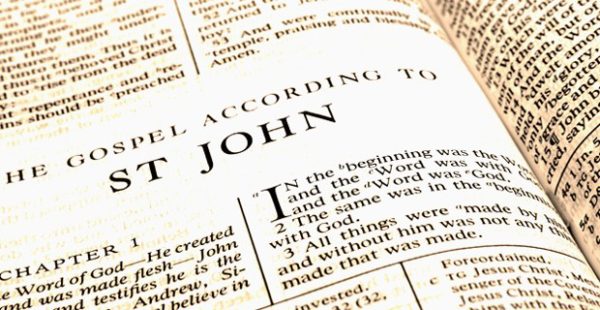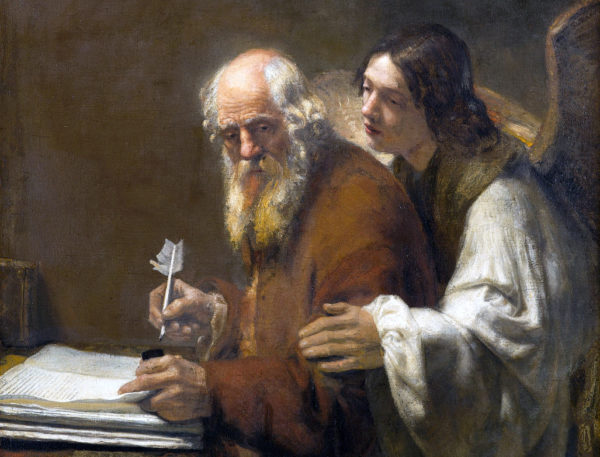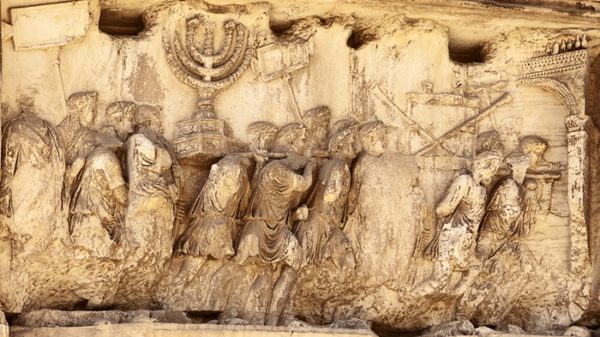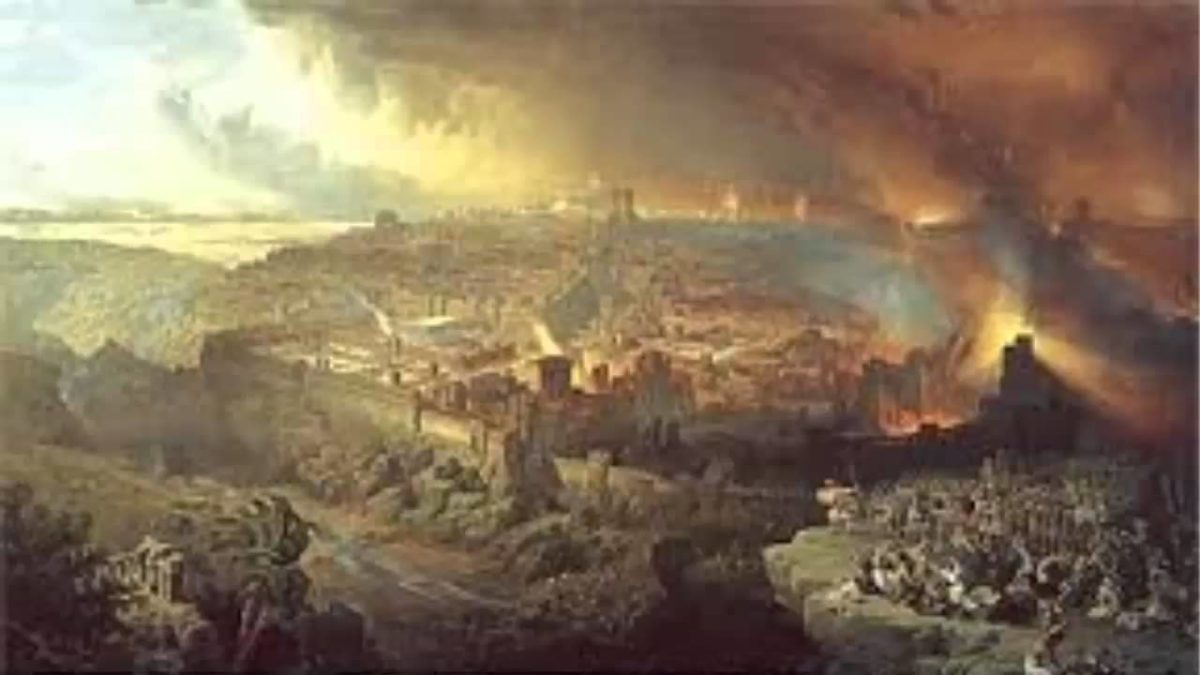Every year as Christmas approaches, it’s common to hear claims like these:
- Jesus wasn’t born on December 25.
- He couldn’t have been, because the shepherds wouldn’t have had their flocks in the field (Luke 2:8).
- Christians got December 25 from a pagan holiday.
On the other hand, one sometimes encounters these claims:
- Jesus was definitely born on December 25.
- The Catholic Church claims that he was.
- The denial of this is an attack on Christianity.
- The early Christians would have been intensely interested in the day of Jesus’ birth and would have recorded it based on Mary’s memory of the day.
Let’s look at both sets of claims, though first let’s look at the year he was born.
The Year Jesus Was Born
A common—though incorrect—view is that he was born around 6-7 B.C. This is based on the idea Herod the Great died in 4 B.C. and Jesus must have been born around two years earlier, since Herod “killed all the male children in Bethlehem and in all that region who were two years old or under” (Matt. 2:16).
However, better studies indicate Herod died in 1 B.C. This agrees with the data from the Gospels, which indicate John the Baptist began his ministry “in the fifteenth year of Tiberius Caesar” (Luke 3:1)—i.e., A.D. 29—that Jesus was baptized shortly thereafter (3:21), and that he began his ministry when “about thirty years of age” (3:23).
If you subtract thirty years from A.D. 29 then—since there is no “Year Zero”—you land in 2 B.C.
This agrees with the date given by the Church Fathers, who overwhelmingly place the birth of Jesus in the forty-second year of Augustus Caesar or 3/2 B.C. (i.e., the last part of 3 B.C. and the first part of 2 B.C.).
For more information on Jesus birth, see Jack Finegan, Handbook of Biblical Chronology, 2nd ed., and Andrew Steinmann, From Abraham to Paul.
Now, on to the claims regarding the day of Jesus’ birth. . . .
“Keeping Watch Over their Flock”
Luke says shepherds were out at night with their flock, but this doesn’t eliminate December 25—or any other winter date.
Ancient Jews didn’t have large indoor spaces for housing sheep. Flocks were kept outdoors during winter in Judaea, as they are elsewhere in the world today, including in places where snow is common.
Search the internet for “winter sheep care” and you’ll find pages by modern sheep owners explaining it’s perfectly fine to keep flocks outside in winter. Sheep are adapted to life outdoors. That’s why they have wool, which keeps body heat in and moisture out.
Sheep are kept outdoors in Israel during winter even today:
William Hendricksen quotes a letter dated Jan. 16, 1967, received from the New Testament scholar Harry Mulder, then teaching in Beirut, in which the latter tells of being in Shepherd Field at Bethlehem on the just-passed Christmas Eve, and says: “Right near us a few flocks of sheep were nestled. Even the lambs were not lacking. . . . It is therefore definitely not impossible that the Lord Jesus was born in December” (Jack Finegan, Handbook of Biblical Chronology, 2nd ed., §569).
The Pagan Holiday Claim
Might Christians have decided to celebrate Jesus’ birthday on December 25 to create an alternative to a popular pagan celebration?
Some Christians do this sort of thing today. Because of the macabre overtones Halloween has in our culture, some Protestant churches hold “Harvest Festival” or “Reformation Day” celebrations on October 31 to give young people an alternative, so it’s not impossible early Christians might have done the same thing.
But there is a poor track record for claims Christian holidays have pagan origins. For example, the claim Easter has a pagan origin is based on a sketchy etymology for the English word Easter, which is allegedly based on the name of a Germanic goddess we otherwise have no record of.
Further, Easter didn’t start in England. It’s celebrated all over the Christian world, and in most languages its name derives from Pesakh—the Hebrew word for Passover—because Jesus was crucified at Passover. Thus, whatever it’s called in individual countries, has Jewish origins.
To sustain the claim Christmas is based on a pagan holiday, one would need to do two things: (1) Identify the pagan holiday it supplanted, and (2) show this was the intent of the Christians who introduced Christmas on December 25.
Some have claimed Christmas is based on the Roman holiday Saturnalia—a festival of the god Saturn. However, this holiday was celebrated on December 17, and though it was later expanded to include the days leading up to December 23, it was over before December 25. A Christian celebration on the latter day would not supplant Saturnalia.
A better candidate is Sol Invictus (Latin, “the Unconquerable Sun”), which was celebrated on December 25. However, the earliest record we have that may point to it being celebrated on that day is late and ambiguous.
The Christian Chronography of A.D. 354 records the “Birthday of the Unconquerable” was celebrated on that date in 354, but the identity of “the Unconquerable” is unclear. Since it’s a Christian document that elsewhere lists Jesus’ birthday as December 25, it could be the Unconquerable Christ—not the sun—whose birth was celebrated.
Even if Christmas and Sol Invictus were both on December 25, Christmas might have been the basis of Sol Invictus, or the reverse, or it might just be a coincidence. If you want to claim the date of Sol Invictus is the basis for Christmas, you need evidence.
That is hard to come by. Even if the Chronography of A.D. 354 refers to Sol Invictus being celebrated on December 25, this is the first reference to the fact, and—as we will see below—some Christians had held Jesus was born on that date for a long time.
If Christians were subverting Sol Invictus, we should find the Church Fathers saying, “Let’s provide an alternative celebration.” But we don’t. The Fathers who celebrated December 25 sincerely thought that’s when Jesus was born.
And even if Christmas was timed to subvert a pagan holiday, so what? Christmas is the celebration of the birth of Jesus Christ, and celebrating the birth of Christ is a good thing. So is subverting paganism. If the early Christians were doing both, big deal!
Ultimately, though, the evidence doesn’t support the claim. Benedict XVI got it right when he said:
The claim used to be made that December 25 developed in opposition to the Mithras myth, or as a Christian response to the cult of the unconquered sun promoted by Roman emperors in the third century in their efforts to establish a new imperial religion. However, these old theories can no longer be sustained (The Spirit of the Liturgy, 107-108).
Not a Matter of Doctrine
What about the assertion that the Catholic Church claims Jesus was born on December 25?
This isn’t the case. The Church celebrates Jesus’ birth on December 25, but this doesn’t amount to a claim he was born on that day.
The liturgical commemoration of an event doesn’t mean the Church holds it happened on that day. For example, the day a saint is commemorated is frequently the day of his death, but not always. Thus St. Ambrose’s memorial is on December 7, though he died on April 4.
One will find Church documents referring to the liturgical celebration of Jesus’ birth on December 25, but one won’t find any magisterial documents establishing it as a Church teaching that this is when he was born.
Though his birth has profound significance for our faith, the particular day it occurred is a matter of history rather than doctrine, and Christians needn’t be disturbed by the idea he was born another day.
An Attack on the Christianity—and Christ?
Is the claim Jesus was born another day an attack on Christianity?
It’s true that some who make this claim want to disparage or undermine Christianity, but not all have this motive. There are sincere Christians who argue Jesus was born another day. Some have even been taken in by the pagan holiday claim and are seeking to protect Christianity from being tainted by pagan associations.
We might be irked when an atheist says, in a superior manner, “You know, Jesus wasn’t really born on December 25,” but his motives are ultimately irrelevant. The claim he’s making is either true or false, and speculating about what’s going on in his heart will generate more heat than light.
What’s important is the evidence and where it leads us.
How Could They Not?
Sometimes defenders of December 25 argue the early Christians would have been intensely interested in the day of Jesus’ birth, and so—based on Mary’s memory of the day—they would have recorded it. How could they not have done so?
There are major problems with this argument. Christians have been curious about many things concerning Jesus that we have no reliable record of.
The Gospels are our most reliable records, but the fantastic expense of book production at the time meant the Evangelists could only record the details they considered most important.
Thus the Gospels don’t tell us the day or even the year of his birth. With the exception of the Finding at the Temple (Luke 2:41-51), they don’t tell us what happened during his childhood, and they tell us nothing at all about his appearance.
Later Christians were curious about all of these, but the fact the Evangelists don’t record them reveal that they didn’t consider it essential for us to know about them.
One reason they might not have considered Jesus’ birthday important is because the celebration of birthdays isn’t a human universal. Many cultures have very different attitudes toward time, and in the twentieth century western scholars working with poorer Middle Easterners could be surprised at how they didn’t have a clear idea of how old they were.
Historically, Jewish culture has been ambivalent toward birthdays, with some rabbis arguing they shouldn’t be celebrated at all, stating that doing so is a gentile or even idolatrous custom.
Some pointed to the fact that, in the Hebrew scriptures, the only birthday celebrated was that of the wicked figure Pharaoh (Gen. 40:20).
Other oppressive rulers also celebrated birthdays—sometimes on a monthly basis—and expected their subjects to do so as well. Thus in the time of the Maccabees, “On the monthly celebration of the king’s birthday, the Jews were taken, under bitter constraint, to partake of the sacrifices” (2 Macc. 6:7).
Roman emperors also had public celebrations of their birthdays, which involved idolatry and fueled Jewish antipathy to the custom.
The only birthday celebration in the New Testament was of the Roman puppet Herod Antipas, and that led to the martyrdom of John the Baptist (Matt. 14:1-12).
It’s thus no surprise to find early Christian writers like Origen, around A.D. 241, disparaging birthdays:
Not one from all the saints is found to have celebrated a festive day or a great feast on the day of his birth. No one is found to have had joy on the day of the birth of his son or daughter. Only sinners rejoice over this kind of birthday. For indeed we find in the Old Testament Pharaoh, king of Egypt, celebrating the day of his birth with a festival, and in the New Testament, Herod. However, both of them stained the festival of his birth by shedding human blood. For the Pharaoh killed “the chief baker,” Herod, the holy prophet John “in prison.” But the saints not only do not celebrate a festival on their birth days, but, filled with the Holy Spirit, they curse that day (Homilies on Leviticus 8:2).
Origen wasn’t alone in the early Church, and he illustrates how other cultures could have very different attitudes toward birthdays. The “how could they not preserve Jesus’ birthday?” argument thus does not succeed.
This isn’t to say early Christian sources didn’t preserve Jesus’ birthday, just that it’s not guaranteed they did. We thus need to look at the evidence.
A Biblical Argument?
Some argue that, though the New Testament doesn’t tell us what Jesus’ birthday was, it contains enough information for us to deduce it.
The argument goes like this: John the Baptist’s father—Zechariah—belonged to the priestly course of Abijah (Luke 1:5), one of twenty-four priestly courses that served in a regular rotation at the temple.
After his vision announcing the conception of John the Baptist, he returned home, and his wife, Elizabeth, became pregnant (1:23-25). Then “in the sixth month” of Elizabeth’s pregnancy, Gabriel appeared to Mary and announced the conception of Jesus (1:26-31).
Therefore, Jesus’ birth would have occurred fifteen months after Zechariah’s service ended, and if we can determine the date that happened then we can determine the date of Jesus’ birth.
While intriguing, this argument doesn’t allow us to determine the day of Jesus’ birth.
First, the priestly courses served at the temple twice a year, and we’d have to guess which of the two Zechariah was performing when he got the vision. That creates an uncertainty of six months.
Second, scholars aren’t sure when each priestly course was on duty. There are different proposals, and the matter is complicated by the fact some Jewish years had an extra month (much like our Leap Year) to keep the calendar in synch with the seasons.
Third, the argument assumes that John the Baptist was conceived immediately upon Zechariah’s return, but Luke doesn’t say that. He says Elizabeth became pregnant “after these days” (1:24).
Fourth, the argument assumes Gabriel appeared to Mary exactly six months after John’s conception, but that also isn’t what Luke says. He states the angel appeared “in the sixth month” (1:26, 36)—i.e., when Elizabeth was between five and six months pregnant. This creates a thirty-day ambiguity.
Fifth, the argument assumes Mary conceived the moment Gabriel spoke to her, but Luke doesn’t indicate that. Gabriel says “you will conceive” (Greek, sullêmpsê)—in the future tense—indicating Jesus will be conceived in the future, but not precisely when.
Sixth, the argument assumes Jesus was in the womb exactly nine months, but the average human gestation period is around 40 weeks from last ovulation. Given four-week months, that would be around ten months. Thus the book of Wisdom states: “in the womb of a mother I was molded into flesh, within the period of ten months” (Wis. 7:1-2). Further, the average human pregnancy varies by as much as five weeks in length, creating an uncertainty of thirty-five days.
In view of these uncertainties, this argument won’t allow us to determine the exact day of Jesus’ birth.
However, it may get us part of the way there. Based on a guess of which of the two priestly services Zechariah was performing, Jack Finegan calculates that the argument would point to a birthday somewhere between December and February, lending plausibility—based on biblical evidence—to Jesus being born in the winter (Handbook of Biblical Chronology, 2nd ed., §473), though it should be pointed out that making the opposite guess about Zechariah’s service would point to a birth in the summer.
The Church Fathers Weigh In
While the New Testament doesn’t name a specific day as the date of Jesus’ birth, some of the Church Fathers do.
Around A.D. 194, Clement of Alexandria stated that “from the Lord’s birth to the death of [the emperor] Commodus comprises 194 years one month and thirteen days” (Miscellanies[Stromateis] 1:21:145:5). Calculating backwards from the assassination of Commodus on December 31, 192, that would put the birth of Christ on November 18, 3 B.C.
Clement also reports there were some who held it occurred on the twenty-fifth of the Egyptian month of Pachon, which would correspond to May 20 of that year (1:21:145:6).
He further reports that some followers of the Gnostic Basilides said that it was on the twenty-fourth or twenty-fifth of the Egyptian month Pharmouthi, which would point to April 19 or 20 (1:21:146:4).
We thus see that, at the end of the second century, a number of different dates for Jesus’ birth were being proposed.
Around 204, St. Hippolytus of Rome wrote that “the first advent of our Lord in the flesh, when he was born in Bethlehem, was eight days before the Kalends of January, the fourth day [i.e., Wednesday], while Augustus was in his forty-second year [i.e., 3/2 B.C.]” (Commentary on Daniel 4:23:3). The Kalends was the first day of the month, and eight days before January 1 is December 25.
This is the earliest record we have of Jesus’ birth being December 25. It precedes by seventy years the time the Emperor Aurelian made Sol Invictus a Roman cult, and it precedes by a hundred and fifty years the earliest claimed reference to Sol Invictus being celebrated on December 25—that claim being based on the Chronography of A.D. 354.
Part 6 of the Chronography lists the following for the eighth day before the Kalends of January: “Birthday of the Unconquerable, games ordered, thirty [horse races].” This may well be a reference to a pagan holiday, but since the calendar was composed after the conversion of Constantine, this isn’t entirely certain.
Part 12 of the Chronolography, which is a calendar of the commemoration of martyrs, lists the following: “Eight days before the Kalends of January: Birth of Christ in Bethlehem of Judea.”
In 386, St. John Chrysostom preached a homily on December 20—the memorial of St. Philogonius—in which he noted that “the day of Christ’s birth in the flesh” is about to arrive in “a period of five days,” or on December 25 (On the Incomprehensible Nature of God 6:23, 30).
Finally, around 408, St. Augustine writes that “according to tradition he [Jesus] was born on December 25” (The Trinity 4:5).
Although the December 25 tradition was becoming well established, it was not the only one in circulation.
Around 375, St. Epiphanius of Salamis offered an extremely precise reckoning of the birth of Christ, stating: “Christ was born in the month of January, that is, on the eighth before the Ides of January—in the Roman calendar this is the evening of January fifth, at the beginning of January sixth” (Panarion 51:24:1). He also noted that a sect known as the Alogoi held the same date (51:29:2-5).
Ultimately, both December 25 and January 6 found places in the Church’s calendar, with the latter being used to commemorate the visit of the Magi and the baptism of Jesus.
Conclusion
Where does all this leave us? On the one hand, the arguments against Jesus being born on December 25 don’t work, and the claim the date was chosen to supplant a pagan celebration is unsupportable. Not only do we find Christians supporting December 25 well before the pagan holiday in question, we also don’t find them saying anything like, “Let’s provide an alternative celebration.” The ones who support December 25 sincerely believe that’s when Jesus was born.
On the other hand, the Bible doesn’t give us enough information to determine Jesus’ birthday, and the tradition in the Church Fathers is mixed, with different dates being proposed.
It has been noted that in the ancient world two of the dates—December 25 and January 6—were sometimes reckoned as the date of the winter solstice, the time when days begin to get longer. Further, the Church Fathers discussed Christ’s birth in terms of light coming into the world, based on Malachi’s prophecy: “For you who fear my name the sun of righteousness shall rise, with healing in its wings” (4:2).
Therefore, it’s possible that the belief Christ was born on a solstice date was based on this prophecy. Alternately, there may have been a memory that Christ was born in the winter, and the specific date was determined based on the prophecy. Or it may be that Christ simply was born on one of these dates, and its conjunction with ancient reckonings of the solstice was a matter of divine providence.
Whatever the case, Christ was born. The sun of righteousness did rise, and “the people who sat in darkness have seen a great light, and for those who sat in the region and shadow of death light has dawned” (Matt. 4:16; Isa. 9:2).


